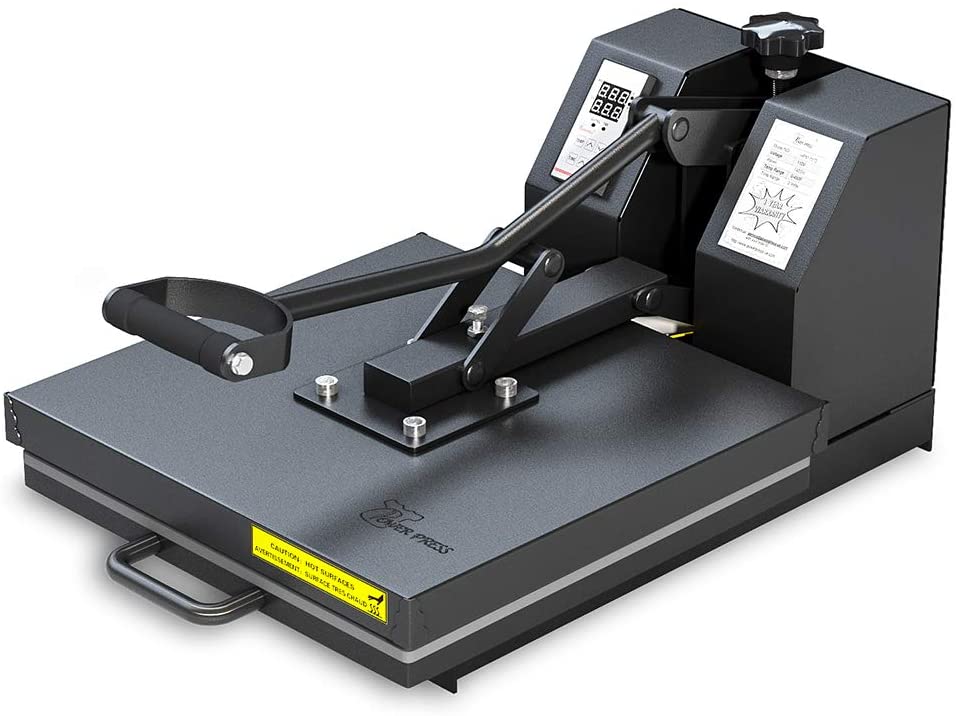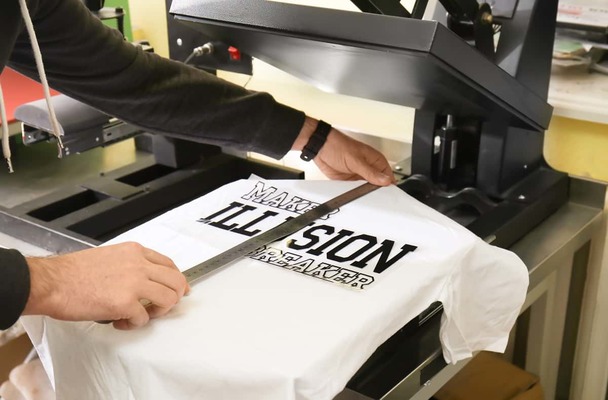Difference Between Heat Press and Screen Printing
Fabric printing is a great way for customers to personalize apparel without the need for a huge budget. With the recent advancements in technology, you can expect to spend less time and energy on printing fabric as well as enjoy lower prices. Many types of printers are available in the market. We will discuss the difference between a heat press and screen printing.
What Does Heat Press printing Mean?
Heat press printing is the process of applying a heated pressure-sensitive material onto the surface of a substrate and then transferring that material to multiple locations.
If you’re looking for an affordable way to produce high-quality apparel and vinyl decals, look no further than heat press printing! With two popular types – digital and transfer – you’ll have no trouble finding one that matches your needs.
Heat press printing is a fast and affordable way to have your design on many surfaces at once. We can use a heat press for fabric, metal, wood, paperboard, plastic, leather, glass, or ceramics. If you run into trouble with your design not transferring properly – try changing the temperature setting on the heat press machine!
Screen Printing vs. Heat Press
Screen Printing and Heat Press are two very different methods of printing a design onto an object. Screen printing relies on ink applied to an object by pressure, while heat press uses heat and ink to create a design.
Screen Printing: Screen printing has been around since the 13th century. The process is manual and requires the use of a screen. It separates the ink from the object to be printed. Sometimes, there may be stencils or templates for screen printers to follow when they make their designs. It isn’t easy to get good at this process because we have to predict how colors will appear on different surfaces like fabric, wood, leather, and metal.

Heat Press: Unlike screen printing, where ink needs pressure to be applied, heat press uses heat for printing the designs on t-shirts, mugs, mobile phone cases, and other materials.

Are There Any Other Differences between the outcome of a heat press and screen printing?
Heat press and screen printing are both methods of printing. While heat press is used on products that need a strong, permanent bond, screen printing is more appropriate for softer materials.
Heat presses and screens have different advantages and disadvantages. One major advantage of heat presses is their ability to reach high temperatures in short periods. The disadvantage of screen printers is that they require more time to set up each print job. In contrast, screen printers have to wait for the screens to reset after every print job automatically.
This may seem like a significant difference when considering the cost between these two methods. However, many other factors, such as the required quality, time, and budget, come into play.
Why a heated bed is required for 3d printer?
Which is cheaper: screen printing or heat transfer?
Screen printing is cheaper than heat transfer because it requires fewer materials, less time, and a lower amount of labor. It is also harder to produce heat transfer compared to screen printing.
In the end, screen printing may be more expensive than heat transfer in the short term. However, it is cheaper overall due to its efficiency and faster production.
What do we require for screen printing?
You should have access to some essential tools like an ink roller, squeegee, screen mesh, screen cloth, and supplies like stencils, transfers, inks, & more.
What do we require for heat press printing?
If you are a beginner, you need a heat press machine, paper, ink, and iron to print on a heat press. The most common colors to use for heat press printing are white, black, and blue.
Is screen printing profitable?
Screen printing is dyeing that uses a mesh or screen of stretched, woven fabric to transfer inks. The process is done by immersing the fabric in an inky bath. After that, use either heat, pressure, or both to cause the ink to transfer onto the fabric.
Screen printing can be profitable for textile businesses because they can create their designs and customize them with logos and the company’s name. Furthermore, screen printing can be more affordable than other forms of customization such as embroidery.
It may not be profitable for small businesses without a particular volume requirement.
Overall, It is profitable and provides a high return on investment if you have bulk orders.
Is heat press printing profitable?
Heat press printing (HTV printing) is a cost-effective option when compared to other printing methods. The cost of heat press printing is typically lower than offset printing, making it more appealing for potential customers.
Is screen printing still used today?
Screen printing is still used today, but the ink is mostly printed on a computer printer and then transferred electrostatically onto the screen.
We discussed the difference between heat press and screen printing, and their pros and cons. We prefer the heat press as it’s the latest technology and saves us time and money.
Comparison of all printing methods
Best printing options for new business
Additional Questions
Is screen printing or heat press better?
When it comes to the comparison between screen printing and heat press, I would like to share from my own personal experience in the printing industry. In terms of durability and quality, screen printing is often superior to heat press. It’s mainly due to the way it works where the ink gets soaked into the fabric, creating a print that is much more resistant to wear and tear. Moreover, screen prints typically produce better quality results because the colors are layered and penetrate the fabric, giving richer and more vivid results.
However, it's important to note that screen printing is more economical when you're looking at larger volume orders. On the other hand, heat transfers can be a better choice for smaller quantities. In the end, both methods have their own strengths and you should choose based on your specific needs and requirements.
What are the disadvantages of heat press printing?
From my professional viewpoint working with different printing methods, I would say heat press printing indeed has certain limitations. For starters, heat press prints sometimes lack durability. The image or design is susceptible to cracking or peeling after repeated washes, more so than with other types of printing.
Also, heat press printing may not be suitable for complex designs with multiple colors as the results may not be as sharp. And since heat press printing typically uses a vinyl material, the finish can feel somewhat plastic-like, which some people may not prefer. Furthermore, despite its advantage in smaller quantity orders, the cost per unit for heat press printing could be higher when compared to screen printing for larger quantities.
Do you need a heat press for screen print transfers?
Based on my dealings with screen print transfers, I can safely say that it’s integral to have a commercial-grade heat press for such operations. The primary reason for this is that many issues that arise with screen print transfers can often be traced back to pressure problems.
From my experience, getting the right pressure is critical in screen print transfers and this is where a good quality heat press can make a significant difference. So, if you're seriously considering screen print transfers, investing in a reliable heat press would be a worthwhile decision.
What is better quality screen printing or digital printing?
In the dynamic world of printing, the strategy of ‘one size fits all’ rarely applies. The best printing method depends on the specific requirements of the task at hand. Personally, I have found that screen printing generally works better for high quantity runs with fewer colors and a requirement for high durability.
On the contrary, digital printing caters well to lower quantity runs and designs that are complex and contain many colors. The resolution and detail produced by digital printing are often superior, making it an excellent choice for intricate designs. So, each method has its own perks and it's all about finding the right fit for the right task.

I’ve been in the printing business for 25 years. I love to share my experiences and knowledge.

